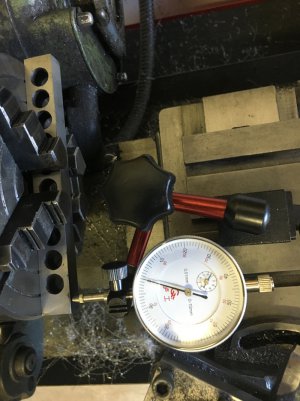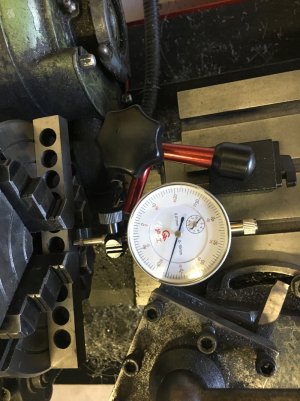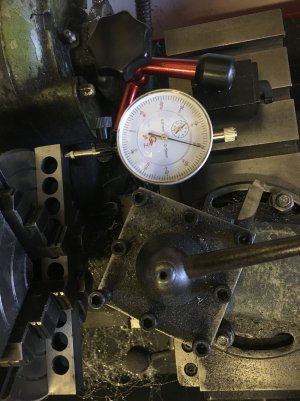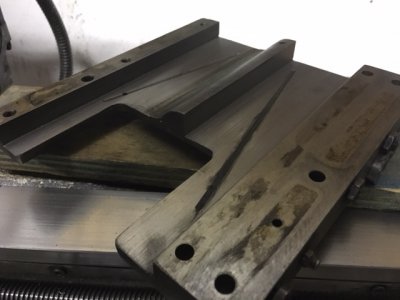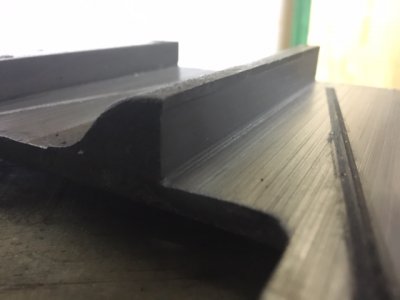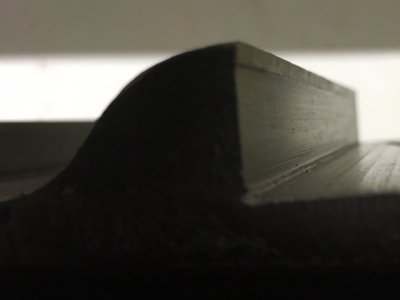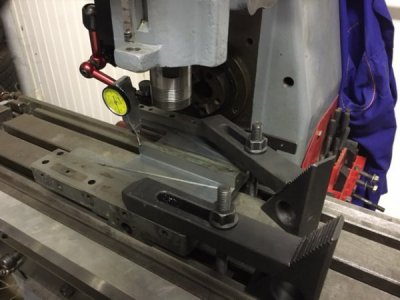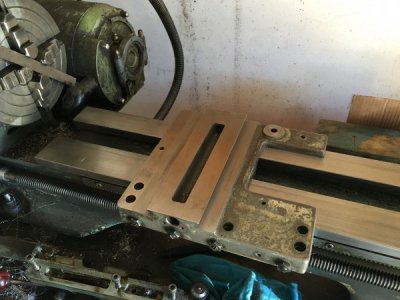Took the plunge last night and cut some metal off my lathe to square up the carriage.
Indicated off the unworn lip, put a brand new carbide cutter in and took off just enough to bring it all down to the most worn end - about 0.25 mm had to be removed from the unworn areas.
View attachment 125769
Reassembled the carriage and gib on the bed and it is smoother at traveling along the bed - still tightens slightly towards the tail stock but to be expected as I measured about 0.08mm of wear in the front bed way width (which is just over the 0.003" magic figure where Myford recommend a regrind).
View attachment 125778
Still need to reassemble the apron and cross slide before I can quantify the improvements, but suspect it may still face slightly convex due to the bed wear. I could 'over correct' the carriage to allow for the bed wear but I would rather fix the bed if possible instead of introducing an intensional error to compensate.
I know the purest will be horrified, but I'm considering a DIY regrind of just the front bed way vertical surfaces to tidy up the alignment. More on that later once I have though it through some more.

